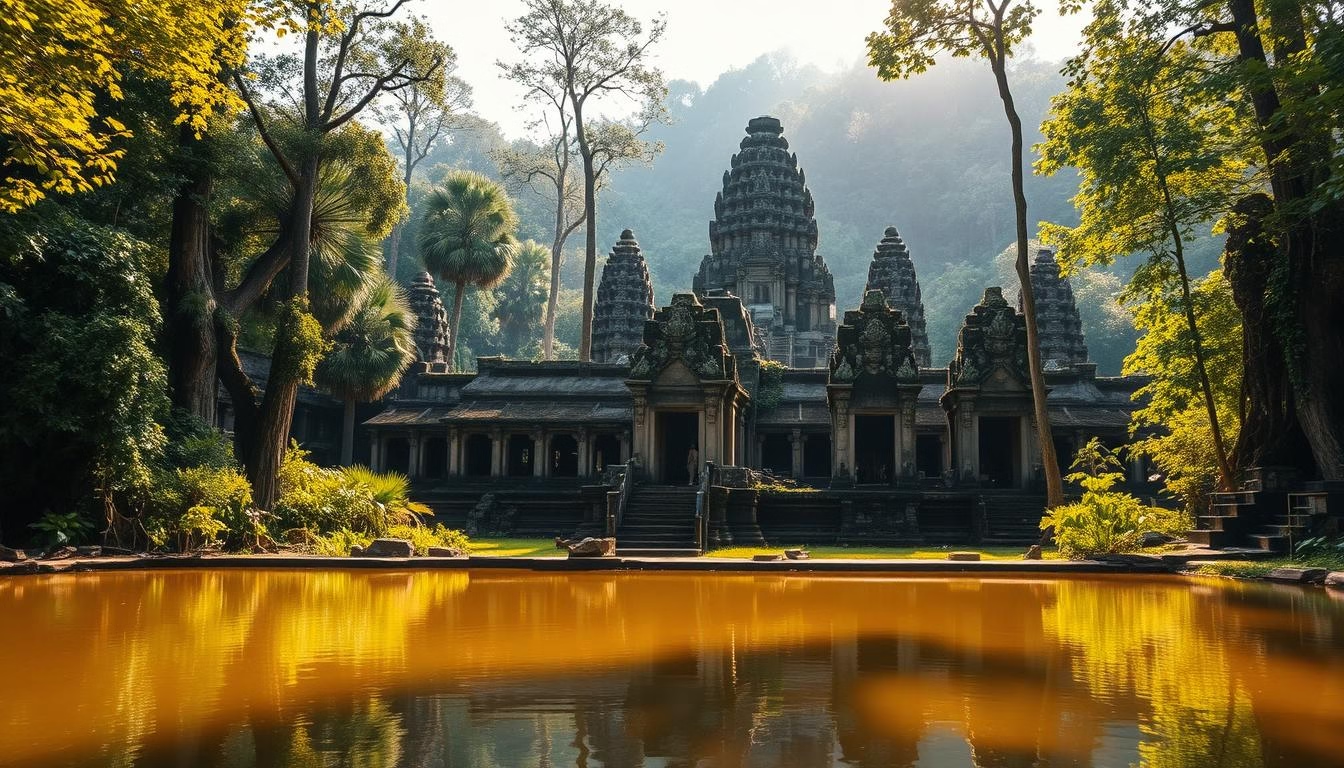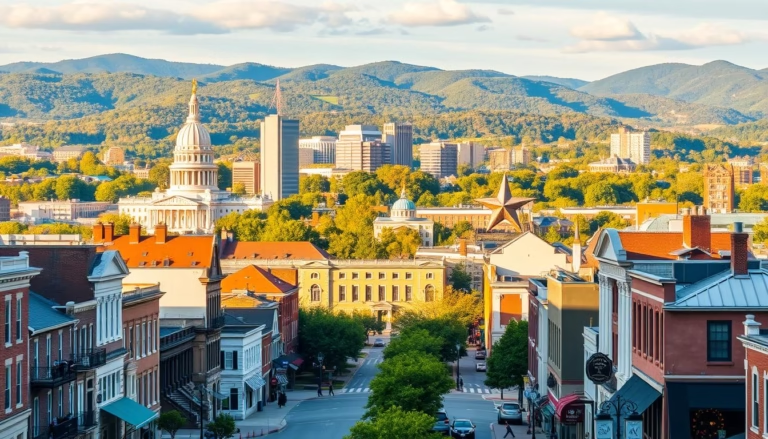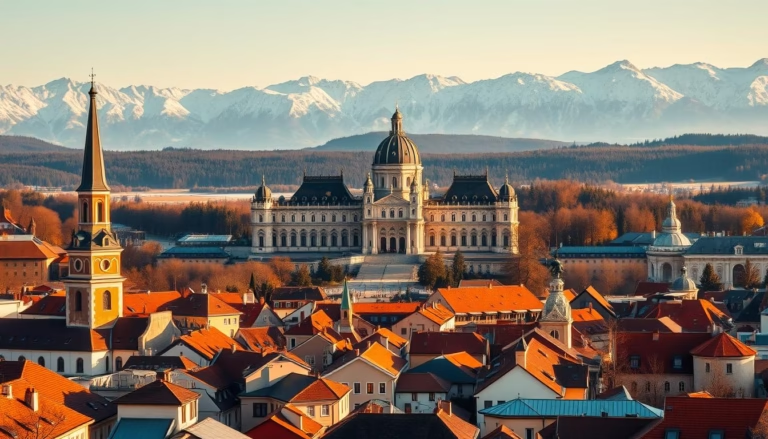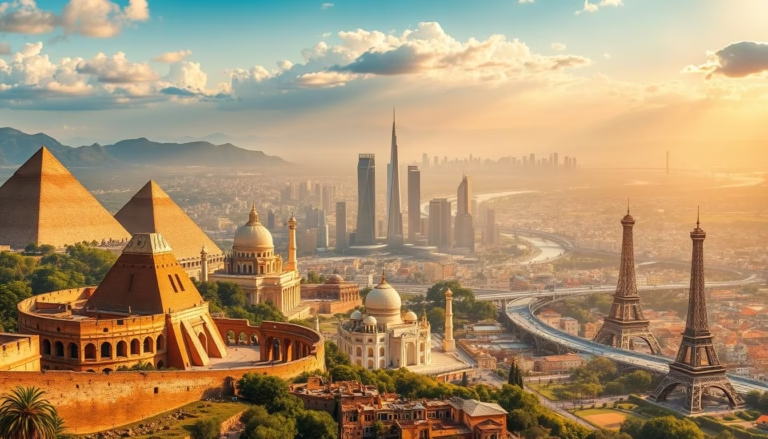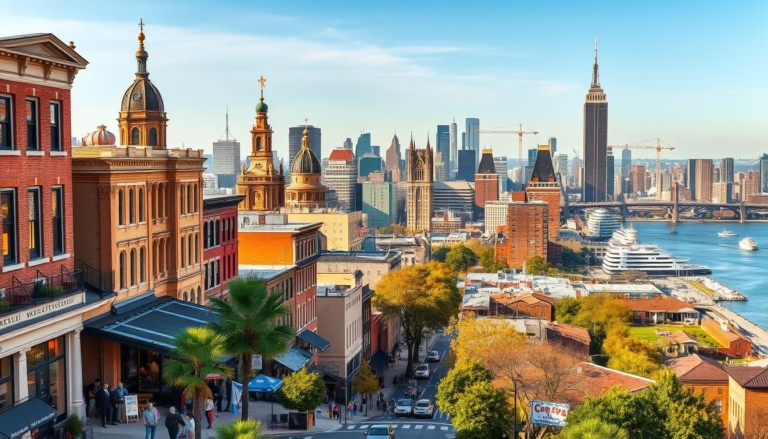Angkor Temples: Unveiling the Mysteries of Cambodia’s Heritage
Step into a realm where history whispers through stone corridors and nature dances with human ambition. This sprawling archaeological complex in Cambodia’s heartland offers more than postcard views—it’s a living storybook of empires, artistry, and spiritual devotion. Spread across 154 square miles, this UNESCO treasure reveals the world’s largest religious monument alongside hundreds of lesser-known marvels.
Many travelers arrive expecting just one iconic structure. What they discover instead is a mosaic of over a thousand sacred sites, each with its own personality. Towering spires mimic mythical mountain ranges, while crumbling walls wear jungle vines like jewelry. Every corner hides carvings of celestial dancers and epic battles frozen in sandstone.
The site’s true magic lies in its layers of history. Built over six centuries by Khmer rulers, these structures served as both spiritual hubs and displays of cosmic power. Today, they offer silent testimony to a civilization that once supported a million people—a scale rivaling modern metropolises.
Exploring this open-air museum requires comfortable shoes and a sense of wonder. Sunrise reveals hidden details in the stonework, while afternoon light transforms reservoirs into liquid mirrors. Prepare for moments of awe, but also for tropical heat and crowds drawn to humanity’s greatest architectural achievements.
Key Takeaways
- The complex contains over 1,000 structures, far beyond its most photographed site
- Ancient builders designed the layout as a symbolic representation of Hindu cosmology
- Intricate carvings depict both religious stories and historical events
- Nature’s reclamation of certain areas creates surreal visual contrasts
- Morning visits help avoid peak crowds and harsh sunlight
Getting Started: An Ultimate Guide to the Angkor Temples Experience
Begin your exploration where history’s echoes meet modern-day marvels. The gateway city of Siem Reap now offers smooth roads and luxury stays while keeping its traditional charm. This blend makes it the perfect launchpad for discovering Cambodia’s crown jewel.
Understanding the Scope of the Temples
The Angkor Archaeological Park stretches across 400 square kilometers—larger than many major cities. Structures here span six centuries, from 9th-century pyramid-like shrines to 15th-century Buddhist sanctuaries. Most visitors follow two main routes:

- Small Circuit: Perfect for first-timers, covering Angkor Wat’s sunrise spots and Bayon’s stone faces
- Grand Circuit: Explores lesser-known gems like Preah Khan’s moss-covered corridors
What Makes This Heritage a Must-Visit?
Each site tells a different story. Angkor Wat’s dawn light turns lotus ponds into mirrors, while Ta Prohm’s roots strangle walls like nature’s artwork. These spaces still pulse with spiritual energy—monks chant in shadowy chambers, and incense swirls around ancient altars.
Expect crowds at sunrise viewpoints, but quieter moments in afternoon heat. Locals suggest starting early and saving jungle-clad ruins for midday when tour groups thin out. Remember: comfortable shoes and hydration are non-negotiable allies here.
History and Cultural Legacy of the Angkor Temples
Unearth the layers of a civilization that once rivaled the greatest cities of the ancient world. At its height, this capital thrived as a spiritual and engineering marvel, supporting over a million people through advanced urban design. Its story weaves divine ambition with human ingenuity—a legacy now etched into weathered stone.
The Rise and Fall of the Khmer Empire
From the 9th to 15th centuries, Khmer kings transformed the landscape into a cosmic blueprint. Each ruler commissioned grander structures, blending Hindu and Buddhist symbolism to cement their divine status. Engineers designed vast reservoirs and canals—liquid highways that sustained both crops and ceremonial rituals.
The empire’s sudden decline remains shrouded in mystery. Scholars point to environmental strain or shifting trade routes. By the 1430s, the capital shifted south to areas like Phnom Penh, leaving its stone wonders to be swallowed by creeping vines.
Rediscovery and Global Impact
French naturalist Henri Mouhot stumbled upon the ruins in 1860, sparking worldwide fascination. His journals described “a rival to Solomon’s Temple,” igniting a wave of exploration. Today, the site’s UNESCO status highlights its value, but preservation battles persist. Conservationists balance tourist footfall with protecting delicate carvings from erosion.
This complex’s revival mirrors Cambodia’s resilience, standing tall among majestic temples around the world. As morning mist clings to ancient walls, visitors witness not just history—but humanity’s enduring quest for meaning.
Discovering the “angkor temples”: Key Sites and Iconic Monuments
Each monument here stands as a chapter in a stone-carved epic waiting to be read. While three landmarks dominate most itineraries, the true adventure lies in balancing iconic sights with quieter marvels.
Highlighting Angkor Wat, Bayon, and Preah Khan
Angkor Wat greets visitors with its 650-foot moat mirroring five lotus-shaped towers at dawn. This Hindu universe in stone features a 1,500-foot bas-relief depicting celestial battles. Arrive before 6:30 AM to capture golden light without shoulder-to-shoulder crowds.
At the heart of Angkor Thom, Bayon’s 216 stone faces radiate calm mystery. Their half-closed eyes follow you through corridors, creating an uncanny spiritual connection. Mid-morning sun highlights their subtle smiles best.
Preah Khan’s maze-like layout rewards explorers. Four ceremonial entrance gates lead to halls where fig roots claw at walls. It’s quieter here—perfect for imagining 12th-century scholars whispering in shadowed libraries.
Hidden Gems: Ta Prohm, Ta Som, and Neak Poan
Made famous by Tomb Raider, Ta Prohm’s silk-cotton trees now draw camera crews. For similar drama without crowds, Ta Som’s eastern gate hides a tree swallowing a tower whole. Visit both around noon when tour groups retreat.
Neak Poan’s island sanctuary surprises with symbolic pools. Its central fountain represents a mythical Himalayan lake—a refreshing stop during afternoon heat. Pair it with Preah Khan for a shaded half-day route.
Architecture and Artistic Details in Ancient Temples
Walls whisper stories here, etched in sandstone by hands that shaped eternity. These structures blend divine vision with technical mastery, where every chisel mark holds meaning. Among them, Banteay Srei stands apart—its pink stone surfaces shimmer with carvings finer than lace.
Intricate Carvings and Symbolism
Scenes from Hindu epics come alive in stone. At the world’s largest religious monument, warriors clash in the Mahabharata across 1,900 square feet of wall space. Look closer to spot floral patterns so precise they mimic silk embroidery—a signature of 10th-century artisans.
Banteay Srei’s “jewel box” temple reveals peak Khmer artistry. Built 300 years before Europe’s Gothic cathedrals, its 20-inch-thick walls feature gods dancing on lotus petals. Even raindrops slide carefully down carved gutters designed to protect these masterpieces.
The Influence of Hindu and Buddhist Traditions
Central towers rise like stairways to heaven, mirroring Mount Meru’s sacred peaks. Surrounding moats represent cosmic oceans—water features that cooled courtyards and reflected celestial glory. Over time, Buddhist elements blended seamlessly, with lotus motifs symbolizing purity in both faiths.
| Hindu Elements | Buddhist Adaptations | Shared Symbols |
|---|---|---|
| Shiva lingams | Buddha statues | Lotus flowers |
| Naga balustrades | Stupa shapes | Elephant carvings |
| Churning of Ocean reliefs | Dharma wheels | Apsara dancers |
Spot recurring characters: serpent-like nagas guard entrances, while garuda birds swoop across lintels. These motifs served as spiritual roadmaps, guiding worshippers through sacred narratives. Even the stone itself carried meaning—pink sandstone for divine spaces, laterite for practical walls.
Navigating the Angkor Archaeological Complex
Smart planning turns this sprawling site into an achievable adventure. With smart strategies, you’ll spend less time in lines and more time discovering hidden carvings.
Planning Your Visit: Ticket Options & Timing
Choose your pass like a savvy explorer. Three options unlock different experiences:
| Pass Type | Cost | Best For |
|---|---|---|
| 1-Day | $37 | Quick highlights |
| 3-Day | $62 | Deep exploration |
| 7-Day | $72 | Photography trips |
Buy tickets after 5pm for free sunset access that evening. Your photo gets printed onsite—make sure to keep the pass visible. Guards check frequently at major sites.
Transportation and Site Layout Tips
Beat the heat and crowds with these moves:
| Option | Cost/Day | Perks |
|---|---|---|
| Bicycle | $3-5 | Quiet paths |
| Tuk-Tuk | $15-20 | Shade + driver |
| Private Car | $35-50 | AC comfort |
Most visitors rush to sunrise spots. Flip the script—explore eastern temples first while crowds gather at western sites. Pack light but bring sunscreen, water shoes for moat crossings, and a scarf for shoulder coverage.
Information boards at major hubs display real-time crowd levels. Use them to dodge bottlenecks. Remember: gates open at 5:30am, but ticket counters start at 5am for early birds.
Exploring the Iconic Angkor Wat and Its Surroundings
As dawn breaks over Cambodia, a sea of tripods and whispers fills the air around the world’s largest religious structure. This UNESCO marvel reveals its magic through golden-hour glows and intricate stone narratives, though visiting Angkor Wat requires both wonder and strategy.
Sunrise and Sunset Experiences
Arriving before 5:30 AM secures prime pond-side spots for the legendary sunrise. While 300+ people often crowd the main reflection pool, try these alternatives:
| Viewing Area | Crowd Level | Photo Tip |
|---|---|---|
| West Library | Moderate | Frame towers through archways |
| North Pond | Low | Capture inverted reflections |
| East Entrance | Minimal | Backlit silhouette shots |
“The real show begins when others leave,” says local photographer Sopheak. Stay 30 minutes post-sunrise as warm light illuminates the temple’s upper galleries with fewer tourists.
What to Look for Inside the Temple
Climb the steep stairs to the central sanctuary when crowds thin around 10 AM. Marvel at the 1,900-foot Churning of the Ocean Milk relief—a stone comic strip depicting Hindu creation myths. Don’t miss:
- The hidden Buddha footprint in the northwest corner
- Sound-amplifying wall niches in the Hall of Echoes
- 12th-century graffiti carved by ancient pilgrims
Midday offers surprising serenity as groups retreat for lunch. This golden hour reveals details most miss—watch how sunlight animates apsara dancers’ jewelry in the southern gallery.
For deeper insights, pair your visit with this comprehensive Angkor Wat guide. Remember: respectful attire (covered shoulders/knees) ensures access to all levels of this spiritual masterpiece.
Must-Visit Temples: From Tomb Raider Spots to Majestic Relics
Beyond the well-trodden paths lie stone wonders where jungle whispers meet human craftsmanship. These sites offer unforgettable encounters with history—no velvet ropes or glass barriers here.
Ta Prohm: The Tomb Raider Temple
Nature takes center stage at this 12th-century marvel. Silk-cotton trees grip crumbling walls like giant octopus arms, creating perfect frames for photos. Morning light filters through leaves, casting patterns on mossy stones.
Visit around 10 AM when crowds thin. Look for the Hall of Dancers, where roots twist around delicate carvings. Local guides often share stories about the 2001 film shoot—ask about hidden chambers not shown on screen.
Pre Rup and East Mebon: Beyond the Crowds
East Mebon’s red brick towers rise like a mountain range in miniature. Climb its weathered steps to find stone elephants guarding each corner—their trunks still sharp after 1,000 monsoons. Restoration teams work discreetly, preserving carvings of Hindu deities.
| Feature | Ta Prohm | East Mebon |
|---|---|---|
| Best Time | Mid-Morning | Late Afternoon |
| Photo Hotspot | Root-Covered Gates | Elephant Statues |
| Unique Trait | Jungle Fusion | Pyramid Design |
For striking sunset shots at Pre Rup, arrive 90 minutes before closing. The warm brick glows crimson as shadows stretch across its upper terraces. Pro tip: Use a polarizing filter to enhance cloud details against the ancient stonework.
These sites prove that visiting Angkor’s hidden corners often creates lasting memories. With fewer visitors, you’ll hear geckos chirping and wind rustling through thousand-year-old corridors.
Local Culture and Practical Insights in Siem Reap
Siem Reap pulses with energy beyond its ancient wonders. Modern cafes line bustling Pub Street, while ox carts still rumble through nearby villages. This city masters the art of blending old and new—a skill reflected in its warm hospitality and vibrant street life.
Embracing Cambodian Traditions and Hospitality
Sunset brings magic to the things Siem Reap does best. Watch silk-clad dancers perform ancient Apsara stories at open-air theaters. Join locals at Wat Bo Road’s night market—perfect for trying crispy fried spiders (if you dare).
When children approach selling souvenirs, smile and say “Orkun” (thank you). Better yet, support ethical shops like Artisans Angkor. Their workshops teach traditional crafts to young Cambodians.
Where to Stay and What to Eat
Sleep in style without breaking the bank:
| Accommodation | Perks | Price Range |
|---|---|---|
| Colonial Guesthouses | Historic charm | $15-40 |
| Boutique Hotels | Pool + tuk-tuk service | $60-120 |
| Luxury Resorts | Temple views | $200+ |
Fuel your adventures with Khmer flavors. Must-try things include fish amok steamed in banana leaves and pepper crab from street carts. The Red Piano’s “Tomb Raider” cocktail tastes better after a temple day.
Local tip: Take a cooking class at a family-run farm. You’ll learn recipes and help sustain rural communities—the tastiest way to travel responsibly.
Essential Travel and Ticketing Information
Maximize your adventure with smart planning that balances cost, comfort, and crowd-free moments. Whether you’re squeezing highlights into one day or lingering for a week, Cambodia’s heritage sites reward thoughtful timing.
Pass Options and Costs
The 3-day pass ($62) gives flexibility—valid for a week—while the 7-day option ($72) spans a month. Local rickshaw drivers charge $15-30 per day, often doubling as informal guides. For deeper insights, licensed experts offer historical context at $25-50/day.
Tips for Managing Crowds and Long Days
Beat the midday sun and tourist groups by visiting between noon and 2 PM. Pack light snacks to avoid lunch-hour lines. Make sure to hydrate—vendors sell water at major sites, but prices climb with the heat.
Pair your temple visits with Cambodia’s enchanting natural wonders for a balanced itinerary. Early mornings and late afternoons shine for photography, while breezy evenings perfect for exploring Siem Reap’s markets.
